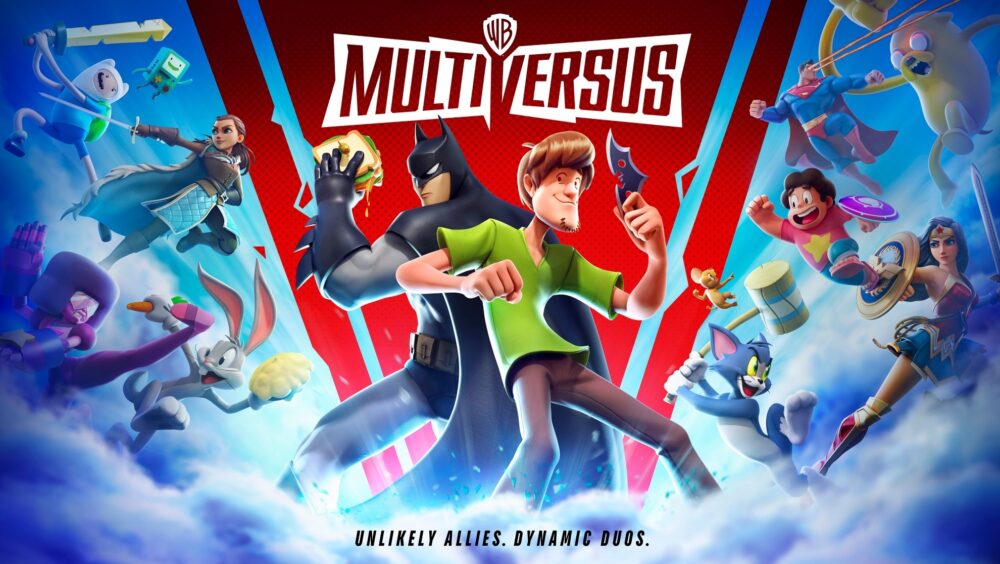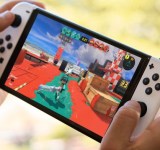Whenever a new fighting game in Nintendo’s Smash Bros style gets announced, the first thing I usually hear is: But is it a Smash Killer? The real question should be, why does it have to be? Along with that, the only other questions I tend to have are whether or not the game is solidly designed and, above all else, fun. And if you can meet these two criteria, then I’m interested. And if you happen to throw in a bunch of characters from across IPs that I want to play with, even better.
Now WB and Player First Games are jumping into the Smash Bros and its clone pool with their own fighting game featuring a gamut of characters from across WB franchises and IPs.
If you’ve ever wanted to see Superman fighting Shaggy fighting Bugs Bunny fighting Arya Stark all at the same time, then this is where you need to be.
Recently we got to try out a build of the game in a closed network test. So what did we think?
Multiversus is definitely a Smash-style brawler through and through. And honestly, that’s no bad thing. The Closed Test didn’t have all of the game’s characters available. With a launch only happening next year, it’s safe to say that there are still more characters being worked on along with announced ones that weren’t available.
The test gave us access to fifteen characters from the roster, with a few unlocked and the rest needing to be bought with in-game earned gold.
Like a lot of free-to-play games today, there is an account level-up system and a character levelling system, along with a Battlepass that comes in two flavours: Free and Premium. Gold is earned through matches and levelling up your account. That XP also goes towards unlocking stuff in the Battlepass which, right now, seems merely cosmetic. More importantly, levelling up each character unlocks perks for them which are real game-changers. But more on that later.
The question at the top of the list is how does it play? And the answer is, really, really fun.
Player First Games have opted not to change up the formula too much. The characters control as they do in other Smash Bros. clones with the same input system. What this means is that if you’ve played any of them before, you can jump right into this one. There are two attack buttons, a dodge and a jump. A direction input plus the button rolls out a different attack or dodge with combos based on the forward direction.
What sets apart Multiversus right now is the smoothness of the combat. Combos flow easily into directional specials and vice versa with a fair amount of interrupts to start up one special, for instance, that has two parts and transitions into a combo before the second part of the move activates. There’s also a fair amount of focus on aerial combat and the combat system works the same whether you’re in the air or on the ground. The developers have given the player a fair amount of freedom in how to stay in the air, perform combos and save yourself from ring-outs.
Most of the matches I was involved in were pure, chaotic chaos that was overwhelming at first. But after a couple of matches, I got into the flow and really began to appreciate the subtleties of the combat system. What was initially chaos of explosions, flying bodies and projectiles became a carefully fought match in which dealing with the biggest threat, or ganging up on the character with the most damage, became viable strategies. The matches were still chaotic though, just in a good way.
Each character falls into a specific class that dictates how they play, regardless of the move set. Superman, for instance, is a slow-moving tank that packs a major wallop while Wonder Woman is a fast-moving one. Bug Bunny throws out Acme safes while Batman can cloud himself in smoke. Instead of health bars, you have a damage meter. Take too much and it’s easier to get knocked out of the ring. Overuse a move or combo and the attack degrades, forcing you to use a variety of moves rather than relying on one.
One area I do have cause for concern in is the character perk system. Levelling up unlocks different perks, such as Steel Skin for Superman which reduces the amount of damage he takes. Characters can have multiple perks activated per match and they make a huge difference. While I did pretty well with my Level 5 Superman in a variety of early matches, taking my Superman up against a level 11 Superman or Level 10 Shaggy, just resulted in me getting wrecked without feeling like I’d landed a blow. And that was beside the other players clearly having had more time with their characters than I had.
Later adopters of the game may have a hard – and possibly – frustrating time in playing catch up when joining the game well after launch. At least until they’ve unlocked a significant amount of perks themselves. During the Test, it felt a little one-sided when playing against a highly levelled Shaggy whose player was up to snuff and had kitted him out with all the perks.
Beyond this small niggle, Multiversus is riotous fun that has me looking forward to the full release next year. There’s still work to be done, but Multiversus has a fantastic mileage of potential fun behind it. If you’re curious to try it out for yourself, be sure to sign-up for the game’s newsletter as an Open Beta is heading your way in July.
This is based on the Closed Beta on the PlayStation Platform
Did you enjoy reading our preview of a game before the game gets its final release and its final version? if yes, click here to find more early previews.







